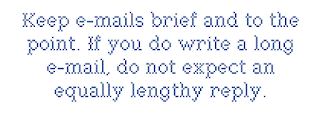Scratch in the Art Room (11/2)
 |
| Screenshot of my process |
I had a pretty easy time starting to design the game; I found it easy enough to set the background, move the donut and ref, and code the arrow keys to move the player. Then I decided I wanted to introduce different levels to my game, and the process got much more complicated from there. I wanted screens to show up when you hit the ref saying "game over", as well as screens that would pop up when you passed the level to bring you on to the next level. I also wanted each of the three levels to have different backgrounds and different patterns of movement for the donut and refs. Because I was starting to do more complicated coding and sequencing, I got frustrated many times when I thought a script would do what I wanted it to but ended up doing something slightly different. I turned to the "Block Help" function in Scratch and found a lot of online threads just by typing my specific problem into google. I also used the "See Inside" function to view other games similar to mine with different screens and levels. Even with all of these resources, it took me a lot longer than I expected to finally get my game working the way I wanted it to.
In the end, I really like how my game turned out, and it makes me much more appreciative of all the game designers out there. Even the simple game apps you might play on a phone have so many different codes and scripts involved behind every game detail.
I think that in the classroom, it's important to give students plenty of time to experiment and play with Scratch before giving them a theme or assignment to follow. By working on their own and problem solving through the website and by talking to their classmates, they will be able to explore all of the possibilities before having to select specific options for a project.
I could see a game design project in Scratch being very engaging for elementary school students who are already playing video games, computer games, and games on their phones. I think students would feel really accomplished at the end knowing they now have the power to create a game similar to the ones they've grown up playing. The class could even have a "gaming exhibition" where everyone rotates around the room to play each other's games.
Another possibility I see with Scratch is to use it as an interdisciplinary opportunity with math. An art teacher could work with the math teacher to express the concepts the students are learning in math in a visually engaging way. Students can learn more about x and y coordinates and axes by coding characters to move to different points. There are also various algebraic functions under the "Operators" script (square root function, greater than, sin functions) so older students could complete these functions in order to drive the movement or animation. For example, "if x position of sprite is greater than 50, move 10 steps". An assignment combining math and art could even be to create a math game while still exploring ideas of color, background, character, and digital painting in the app.

Comments
Post a Comment